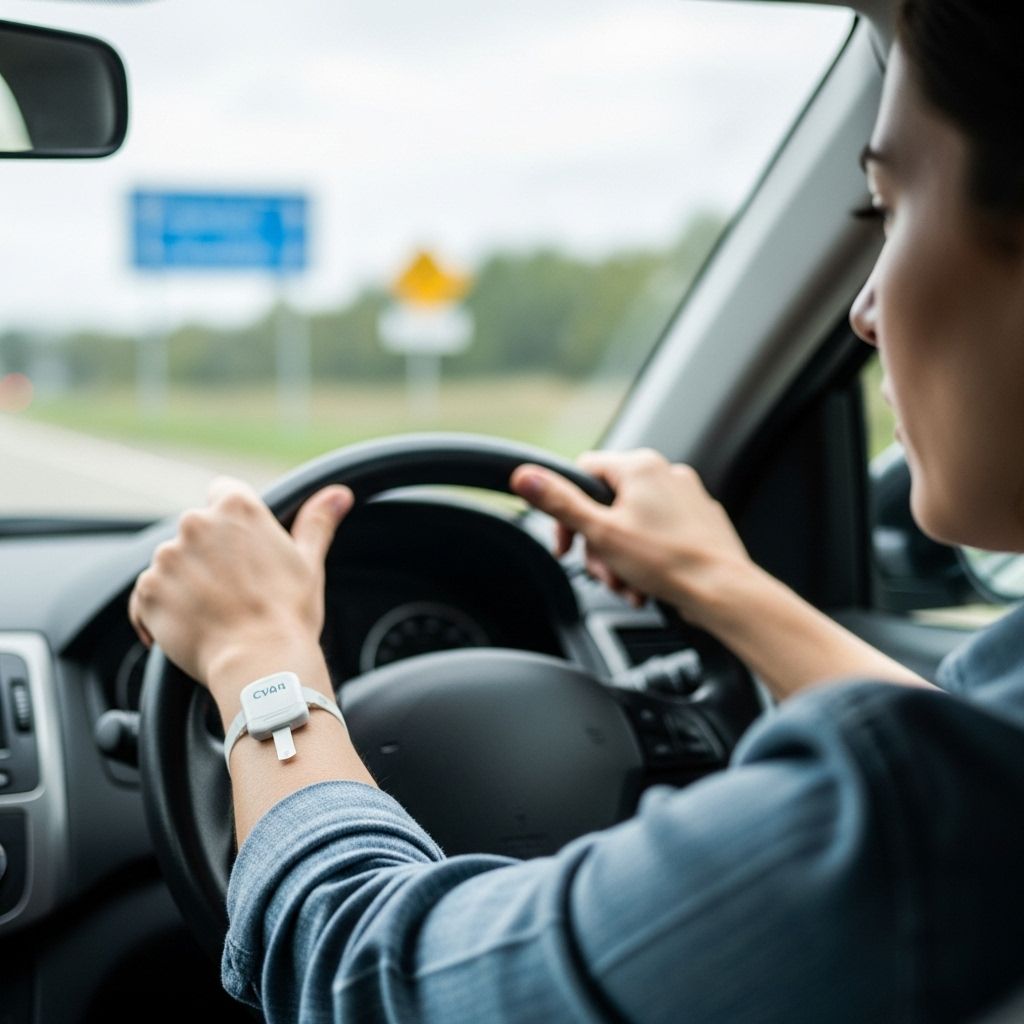Does Diabetes Affect Your Driving Ability?
Learn how diabetes can impact driving safety—and practical strategies to manage risks on the road.

For millions of people with diabetes, driving is a crucial part of daily independence. While most individuals with diabetes drive without difficulty, it is important to recognize how this medical condition—and its complications—can affect driving ability, safety, and responsibility on the road.
How Diabetes Can Affect Driving
Diabetes itself does not automatically prevent someone from driving. However, certain complications or sudden changes in blood sugar levels may impair your ability to drive safely. Key ways that diabetes can affect driving include:
- Blood Sugar Variability: Both high and low blood sugar can cause cognitive changes or slow response times.
- Vision Changes: Diabetes can cause blurry vision or vision loss due to complications like diabetic retinopathy.
- Neuropathy: Nerve damage may reduce sensation in your hands or feet, making it hard to feel or properly use the vehicle’s pedals.
- Sudden Severe Symptoms: Hypoglycemia (low blood sugar) can trigger dizziness, confusion, seizures, or loss of consciousness while driving.
Common Diabetes Complications Impacting Driving
- Hypoglycemia: The most dangerous risk. Low blood sugar can cause:
- Dizziness or shakiness
- Confusion
- Poor coordination
- Blurred or double vision
- Fatigue, sleepiness
- Seizures or unresponsiveness (in severe cases)
- Visual Impairment: Chronic high blood sugar can damage blood vessels in the eyes, reducing vision clarity or causing blindness (diabetic retinopathy).
- Peripheral Neuropathy: Loss of feeling in the feet or hands, leading to trouble sensing the pedals or steering wheel.
Symptoms of Low Blood Sugar While Driving
Knowing the signs of hypoglycemia is essential for every driver with diabetes. Symptoms can develop quickly and may include:
- Dizziness
- Tremors or sweating
- Tingling sensations
- Mood changes or irritability
- Inability to concentrate or confusion
- Slurred speech
- Blurred vision
- Seizures or loss of consciousness (if untreated)
Low blood sugar’s impact on driving can be comparable to driving under the influence of alcohol, resulting in poor judgment and slow reaction times.
Rules and Regulations for Driving With Diabetes
Driving laws and requirements for people with diabetes may vary depending on where you live. Generally, regulations aim to ensure that drivers are not at significant risk for dangerous episodes, like severe hypoglycemia, while operating a vehicle.
U.S. State Requirements
- Approximately half of U.S. states require drivers applying for a license to report a diabetes diagnosis.
- Some states require notification if you have any condition (including diabetes or epilepsy) that could cause loss of consciousness while driving.
- Renewal policies and restrictions may depend on how well your diabetes is managed and whether you are at ongoing risk for hypoglycemia.
Global Considerations
- In many countries, licensing authorities review medical fitness to drive on a case-by-case basis, with a particular focus on people at risk for severe, unannounced hypoglycemia.
- Individual assessment and regular medical reviews may determine eligibility to maintain or renew a license in those with higher-risk profiles.
In most cases, people with well-managed diabetes can obtain and retain a driver’s license, but are urged to report changes in health that might affect driving safety.
How to Safely Drive With Diabetes
With preparation and awareness, you can take meaningful steps to minimize risks and protect yourself and others on the road. Consider these best practices:
- Check Your Blood Glucose Before Driving
- Always check your blood sugar before starting a drive, no matter the distance.
- Target at or above 90 mg/dL (5.0 mmol/L) before getting behind the wheel.
- Keep Snacks and Glucose On Hand
- Stock your vehicle with glucose tablets, juice, or non-perishable carbohydrate snacks.
- Plan ahead for longer trips by keeping supplies readily accessible.
- Do Not Drive If Your Blood Sugar Is Low
- If your glucose is under 90 mg/dL (5.0 mmol/L), eat a 15-gram carbohydrate snack and recheck after 10-15 minutes.
- Wait until your blood sugar is above 90 mg/dL before starting to drive.
- Be Cautious With Medications
- Certain diabetes medications, especially insulin and sulfonylureas, increase the risk for hypoglycemia.
- Know how your medications work and discuss any driving-related concerns with your healthcare provider.
- Plan for Extended or Unscheduled Stops
- Check your blood sugar every 1-2 hours during long drives.
- Be prepared to pull over if you start feeling symptoms of low or high blood sugar.
- Consider Wearing Medical Identification
- Wearing a medical ID (bracelet, card, necklace) alerts first responders to{
References
- https://pmc.ncbi.nlm.nih.gov/articles/PMC5471925/
- https://guidelines.diabetes.ca/cpg/chapter21
- https://www.healthline.com/health/diabetes/does-diabetes-affect-your-driving-ability
- https://pedsendo.org/patient-resource/driving-and-diabetes/
- https://diabetesjournals.org/care/article/47/11/1889/157262/Diabetes-and-Driving-A-Statement-of-the-American
- https://joslin.org/news-stories/all-news-stories/education/2021/03/5-tips-remember-when-you-get-behind-wheel
- https://www.dmv.ca.gov/portal/driver-education-and-safety/medical-conditions-and-driving/diabetes-and-driving/
- https://www.webmd.com/diabetes/diabetes-driving-tips
- https://pmc.ncbi.nlm.nih.gov/articles/PMC3652323/
- Wearing a medical ID (bracelet, card, necklace) alerts first responders to{
Read full bio of medha deb












